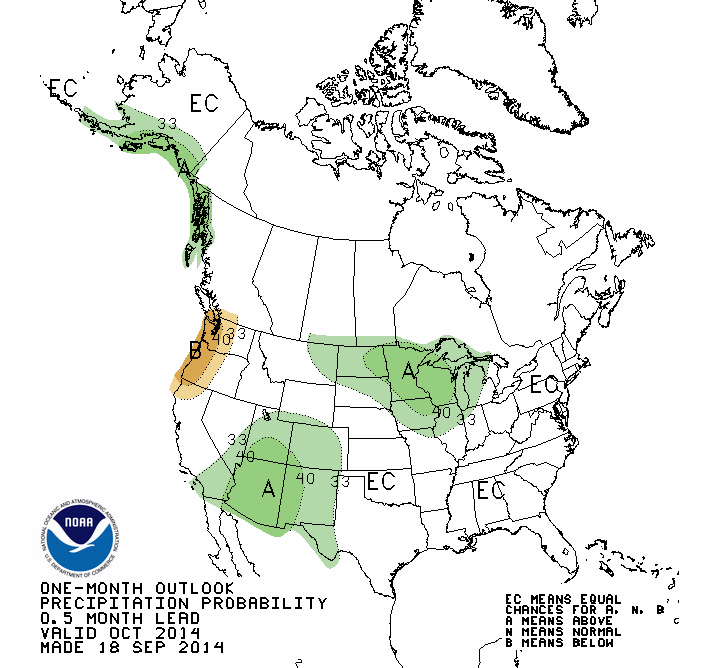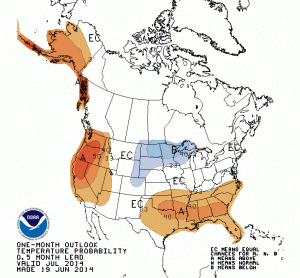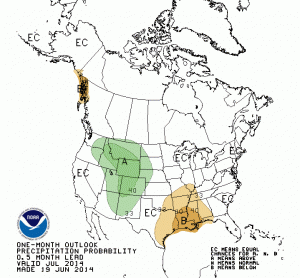In early May 2015, the Climate Prediction Center reported that weak to moderate El Niño conditions were present in the Pacific Ocean basin, along the equator. Furthermore, there is a greater 90% chance it will continue through summer and a greater than 80% chance it will last through 2015.
Now that El Niño has arrived, it’s influence on the NWS climate outlooks released last Thursday is considerable. For June (first figure, top row), the Southern Plains are expected to have an increased chance of cooler-than-average temperatures. A large part of the US is expected to have an increased chance of wetter-than-average precipitation, including portions of the southern and western Corn Belt.
For the period June-August (first figure, second row), the increased chance for cooler-than-average conditions stretches northward and eastward and includes all of Kansas and Missouri, southern Nebraska and Iowa, and far western Illinois. Continue reading



